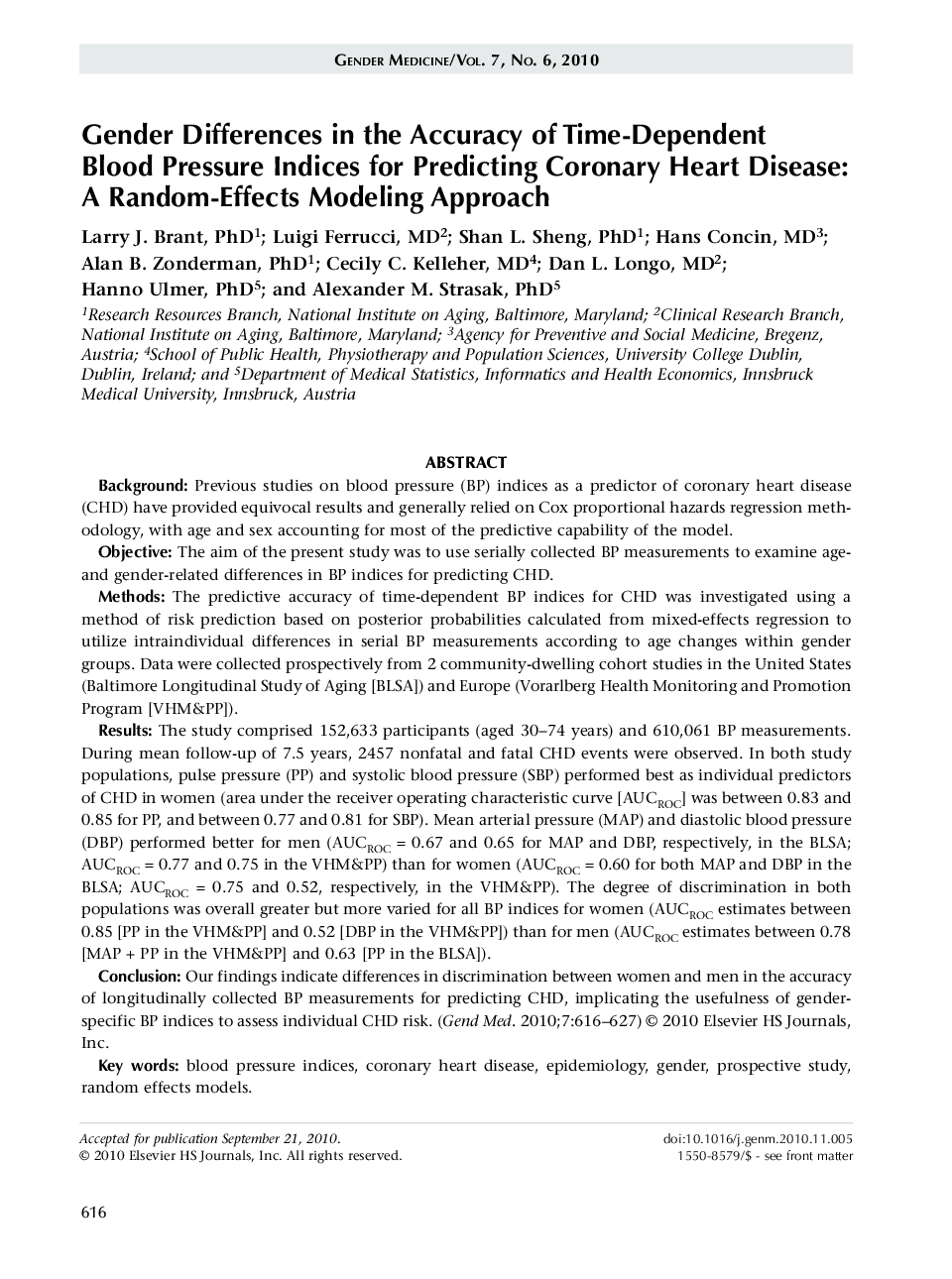| کد مقاله | کد نشریه | سال انتشار | مقاله انگلیسی | نسخه تمام متن |
|---|---|---|---|---|
| 2915697 | 1575708 | 2010 | 12 صفحه PDF | دانلود رایگان |

Background: Previous studies on blood pressure (BP) indices as a predictor of coronary heart disease (CHD) have provided equivocal results and generally relied on Cox proportional hazards regression methodology, with age and sex accounting for most of the predictive capability of the model.Objective: ½ The aim of the present study was to use serially collected BP measurements to examine age-and gender-related differences in BP indices for predicting CHD.Methods: The predictive accuracy of time-dependent BP indices for CHD was investigated using a method of risk prediction based on posterior probabilities calculated from mixed-effects regression to utilize intraindividual differences in serial BP measurements according to age changes within gender groups. Data were collected prospectively from 2 community-dwelling cohort studies in the United States (Baltimore Longitudinal Study of Aging [BLSA]) and Europe (Vorarlberg Health Monitoring and Promotion Program [VHM&PP]).Results: The study comprised 152,633 participants (aged 30–74 years) and 610,061 BP measurements. During mean follow-up of 7.5 years, 2457 nonfatal and fatal CHD events were observed. In both study populations, pulse pressure (PP) and systolic blood pressure (SBP) performed best as individual predictors of CHD in women (area under the receiver operating characteristic curve [AUCROC] was between 0.83 and 0.85 for PP, and between 0.77 and 0.81 for SBP). Mean arterial pressure (MAP) and diastolic blood pressure (DBP) performed better for men (AUCROC = 0.67 and 0.65 for MAP and DBP, respectively, in the BLSA; AUCROC = 0.77 and 0.75 in the VHM&PP) than for women (AUCROC = 0.60 for both MAP and DBP in the BLSA; AUCROC = 0.75 and 0.52, respectively, in the VHM&PP). The degree of discrimination in both populations was overall greater but more varied for all BP indices for women (AUCROC estimates between 0.85 [PP in the VHM&PP] and 0.52 [DBP in the VHM&PP]) than for men (AUCROC estimates between 0.78[MAP + PP in the VHM&PP] and 0.63 [PP in the BLSA]).Conclusion: Our findings indicate differences in discrimination between women and men in the accuracy of longitudinally collected BP measurements for predicting CHD, implicating the usefulness of gender-specific BP indices to assess individual CHD risk.
Journal: Gender Medicine - Volume 7, Issue 6, December 2010, Pages 616-627